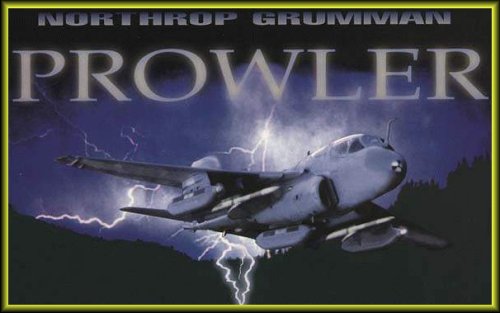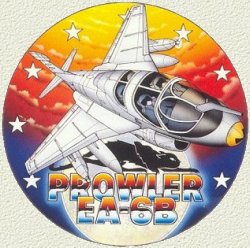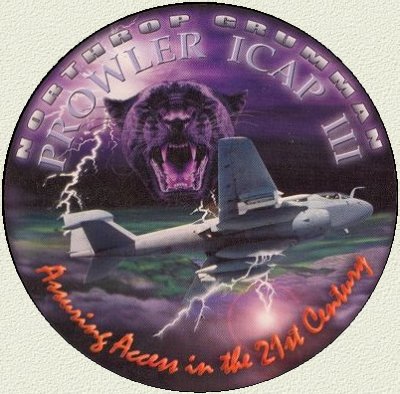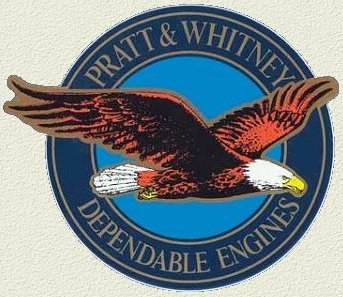|
|
~ Aircraft History ~
Manufactured by Northrop Grumman Aerospace Corporation, the EA-6B Prowler first became operational in 1971 with numerous upgrades in the years that followed. Its mission filled the need for a dedicated Electronic Warfare aircraft to provide an electronic countermeasure curtain for strike aircraft that was survivable in a tactical environment. The aircraft operates from aircraft carriers and from forward land bases. The EA-6B Prowler is a twin-engine, mid-wing aircraft. A derivative of the A-6 Intruder, the Prowler has a larger pod at the top of the tail fin to house the electronic warfare equipment and a longer nose with a larger cockpit section with two canopies to accommodate the pilot and mission crew. The under fuselage structure was reinforced in the area of the A-frame arrester hook and landing gear for the heavier aircraft to withstand carrier landings. The aircraft is crewed by a pilot and three Electronic Countermeasures officers (ECMOs). The forward section of the cockpit accommodates the pilot on the port side and one ECM officer station equipped with the communications, navigation systems, and the defensive electronic countermeasures including the decoy dispensers. The rear cockpit accommodates two ECM officers and the ALQ-99 control and display stations. Either of the two officers can monitor or control the ALQ-99 electronic warfare operations. The side-by-side cockpit arrangement gives maximum efficiency, visibility and comfort. Designed for carrier and advanced base operations, the Prowler is a fully integrated electronic warfare system combining long-range, all-weather capabilities with advanced electronic countermeasures. A forward equipment bay and pod-shaped faring on the vertical stabilizer fin contain the additional avionics equipment. Five external store stations carry jamming pods, HARMs, or fuel tanks. Prior to flight, external stores are configured to meet unique mission requirements. The Prowler is armed with the AGM-88 High Speed Anti-Radiation Missile (HARM), developed by Raytheon (formerly Texas Instruments) in Dallas, Texas. The HARM missile seeks and destroys hostile land based and sea borne radar directed air defense artillery systems and surface-to-air missile systems. Surveillance receivers in the vertical stabilizer pod monitor the threat spectrum of interest. The intercepted information is processed by a Central Mission Computer to determine signal characteristics and to identify the signal sources. This data is displayed to the ECMOs for constant situation awareness and Tactical Jamming System threat management activities. As threats are identified or anticipated, the ECMOs have the option of automatically or manually jamming specific radars and communications or employing HARMs. The ALQ-99 jamming transmitters are installed in integrally powered pods and carried on external store stations. These are extremely comprehensive tactical jammers, operating over a wide range of overlapping frequency bands including Band 1 (VHF) to Band 10 (12 to 18 GHz). The Prowler carries up to five ALQ-99 tactical jamming pods, two under each wing and one under the fuselage. The pods can be configured to suit the mission requirements. Each pod houses two powerful continuous wave transmitters, which use beam steering to direct the jamming signal at the threat. An exciter in the pod tailors the parameters of the jamming signal. The electrical power source in the pod is a ram air turbine. Each pod has a control computer linked to the ALQ-99 central processing unit on the aircraft. The central processing unit processes the received threat signals, manages the jamming operations and generates the data for display to the crew. Prior to the mission, data on the characteristics of emitters, which will possibly be deployed by the hostile forces, are downloaded into the threat library in the central processing unit. The CPU compares the parameters of detected threat signals with the threat library using signal-matching algorithms. Threats are identified, located, prioritized and the CPU recommends the action to be taken to counter the threat, or can automatically steer the transmissions to the target location and initiate the jamming sequence. The receivers are configured to provide the Prowler with 360-degree coverage. Blister fairings on both sides of the tail fin house the receiver antennae for bands 1 and 2 (VHF and VHF/UHF). The fin top blister fairing houses higher frequency receiving antennae systems. The EA-6B Prowler's primary mission is to protect US or allied carrier groups and aircraft by conducting electronic warfare (jamming enemy radars, communications, and data links). Other mission profiles include carrying out electronic surveillance tasks, armed reconnaissance, and providing defense against incoming anti-ship missiles. The Prowler has the ability to passively detect enemy radar without making its own presence known. The EA-6B Prowler was the first aircraft built from the drawing boards to fulfill the role of an electronic warfare aircraft. It was designed to complement the Navy's defenses in today's electronic warfare environment. Combining a fully integrated electronic warfare system with long range, all-weather capability, the EA-6B has the ability to intercept, analyze and effectively neutralize hostile radars. Electronic countermeasures required improvement to compete with the ever-increasing complexity of hostile radar-guided guns, missiles and aircraft. The EA-6B supports strike aircraft, ships, and ground troops by degrading the enemy's early warning capability and electronic weapons systems. The avionics contained in the aircraft enable it to navigate under all weather conditions without reference to ground navigation aids, fly high altitude or low-level profiles, and intercept and jam enemy electronic emissions. The EA-6B Prowler is included in every aircraft carrier deployment as an integral part of the fleet's first line of defense, and will remain so well into the next century. As a result of US defense restructuring in 1995, the EF-111 Raven was retired and the EA-6B was left as the only radar jammer in the US inventory. Four new squadrons were formed and the disestablishment of a fifth was cancelled. Four of these squadrons are dedicated to supporting USAF Expeditionary Force wings. There are currently nineteen Prowler squadrons in the US military: four in the Marines and fifteen in the Navy. There are five "Expeditionary" squadrons manned by both Navy and Air Force personnel, which deploy to overseas bases as a replacement for the EF-111 Raven. The Marine squadrons are stationed at Cherry Point, NC. The Navy has fourteen squadrons based at NAS Whidbey Island, WA, and one permanently deployed in Atsugi, Japan. Since being introduced into the fleet, updates have kept the Prowler abreast of the dynamic threats and the expanding roles associated with the Command and Control Warfare mission area. The EA-6B has made significant contributions to every major conflict in which Allied air has participated since the Vietnam War. It was key to our early and overwhelming success in the Desert Storm War and is now playing an integral role in worldwide peacekeeping operations. In the coming years, the Prowler fleet will be modernized and upgraded to keep the aircraft and its systems abreast of evolving threats and to maintain aircraft safety. Upgrade programs will address structural and supportability problems associated with aging aircraft and will include numerous avionics improvements for safety of flight and joint interoperability. Later improvements to the Prowler's AN/ALQ-99 tactical jamming system, new high and low frequency transmitters, and continuing structural enhancements, will ensure that the EA-6B remains the world's premier tactical electronic warfare platform and a force multiplier for years to come. It is said among aviators that no one wants to fly over hostile territory without a Prowler along to provide the Electronic Shield.
~ Specifications ~
Please click a thumbnail to view the larger image.
REFERENCES:
|
|||||||||||||||||||||||||||||||||||||||||||||||||||||||||||||||||

















